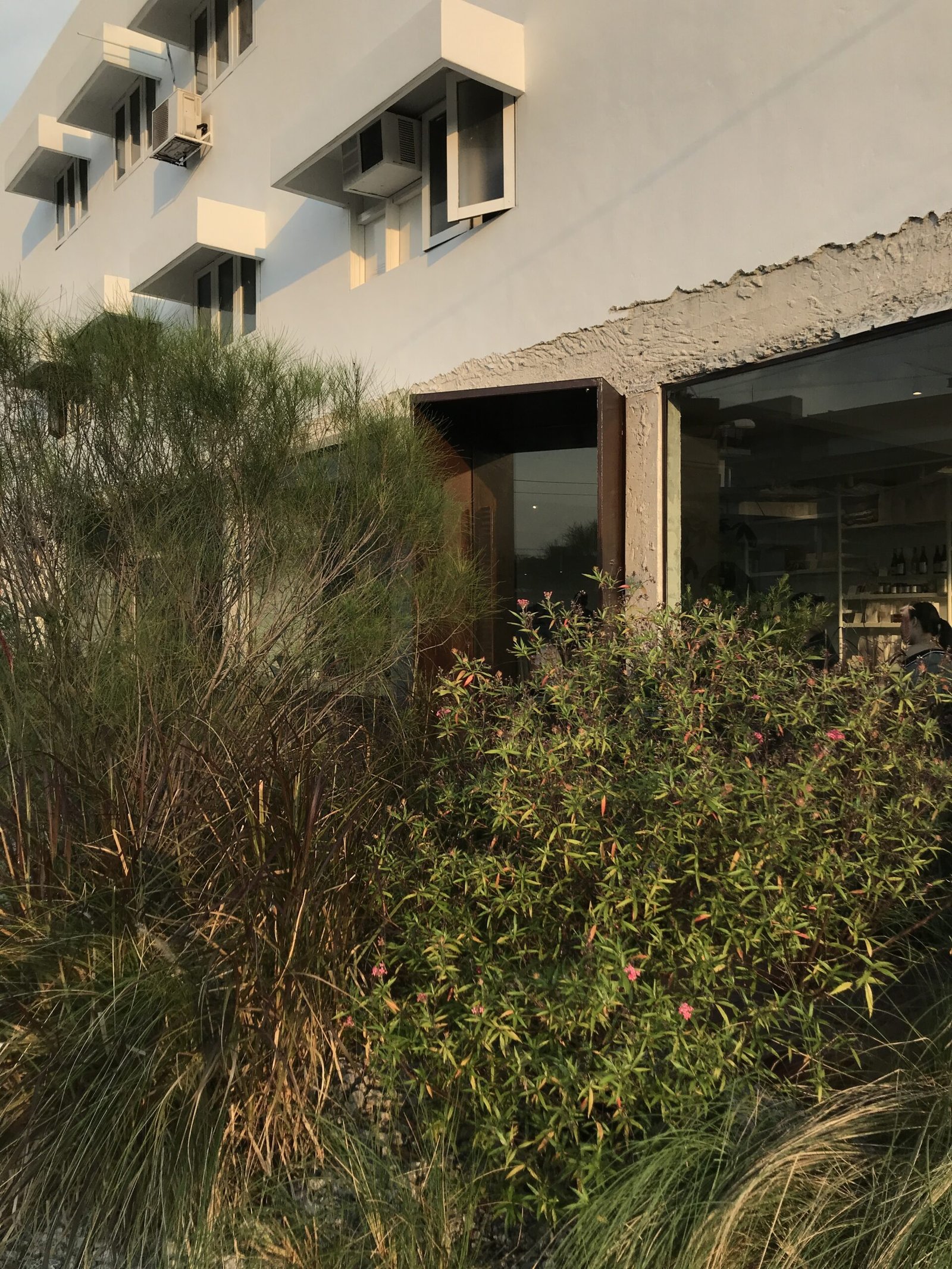Interview Patrick Kasingsing
Images Sputnik Forest Labs


Sputnik Forest Labs founder Wei Ming 

Good day, Wei Ming! What’s today’s brew?
You mean in my cup of coffee or what’s simmering in our minds for our next project?
Can you recount to us how you fell in love with gardening and landscaping? When did you start your greenscape studio Sputnik Forest Labs?
Oh dear, sometimes we tend to think a bit too far when it comes to questions like this. Do we start with our childhood cactus obsession? A rainy day at a floral fest in Hong Kong as a kid, playing in grandpa’s garden? plant nursery trips with mum and her sister or hiking in the local jungles with our uncle, who spend every weekend on long strolls with his little gang amidst the local tropical jungle? Perhaps that’s love—when you have no clear sense of time or how.
You’ve probably answered this question quite frequently but can you school us in on your studio name? What’s the story behind it?
We have two answers to this. The more literal one comes from the Mandarin phrase for satellite, which translates to “man-made star”. With a man-made forest, it doesn’t matter the size, but the message to drive the imagination is there. Just like how Sputnik changed the world of aerospace.
The real reason was that we simply love Haruki Murakami and his words. [Our name is] inspired by the book Sputnik Sweetheart; ‘sputnik’ means “companion” in Russian.




Tell us a bit about how your field of greenscaping is perceived in Malaysia? By the masses? By architects and fellow designers?
We started out with potted plants for cafe and office spaces but as the projects grew, we were given many opportunities to ideate on how plants can be incorporated into different spaces—from cafes, offices, private houses, art installations, to public parks.
There is definitely a growing demand for specialized plantscaping from local designers and clients. Many like the idea of plants but need help on how to really work with them and keep them alive.
What are some of the parallelisms between the realm of gardening and design that you find surprising?
Design is an exercise of imagination and patience. Gardening can be both a problem and a solution. Like humans, plants can be unpredictable and demanding. Design is our way of trying to solve this problem, be it visually or functionally. The interesting part is the training of one’s perceptions and openness to learn and unlearn every day, as part of being alive.
Is there a lack of green spaces in urban centers like Kuala Lumpur and Penang?
Having traveled a lot to KL in recent years for work, we can’t say that it’s lacking in well-maintained walkable green space. However, being in a tropical country, when a piece of land is left to grow wild on its own, nature finds its way to reclaim the empty grassland rapidly. What is lacking are fresh ways to treat and make them into enjoyable spaces for the public. The possibilities are yet to unfold.
As for Penang, we wondered at the beginning why there weren’t any parks in the city. After some time, we realized that the island is actually one big forest, with cities built at its fringes. This has rapidly changed over the past two decades as more and more land opens up for development.




Experimental botanical installations 

What for you should be the relationship between architecture and landscape? I ask this as oftentimes, landscaping in developing countries like the Philippines are seen as an afterthought.
Plants and trees have a way of marking the passing of time. Perhaps it’s in our DNA to feel more at ease when we are in such an environment as our ancestors were foragers and part of the tapestry of the ecosystem. Being among trees and plants are part of our natural instinct. Trees planted today are not for us, but for our children and their children to enjoy.
In your work what would you say are the characteristics of landscaped spaces that last and leave an impact? Can you cite a landscaped space or place you’ve visited that espoused such qualities?
The most beautiful landscapes are the ones not done by man, but by the passing of time.
There’s been a rise in the number of plant enthusiasts since the pandemic started. What do you feel about this development? What are the good and bad points about it?
The recent plant craze has been an interesting phenomenon. Some people hunt after plants like it’s Pokemon Go! Some people make a fortune out of reselling plants. Some people found a new hobby that’s worth a lifetime of exploration. We believe the pandemic opened up a totally new perspective of the world and how humans behave. We are now at one of the biggest crossroads in human history, [pushing us to think] of what we would make of the planet we call home.
Green spaces are oftentimes the first to go in the name of development in urban areas, but the recent pandemic and climate change-driven weather anomalies have revealed the downsides to this. What more can be done by local government and private sectors to encourage the promulgation of green spaces?
The government and private sectors won’t change unless [the public] starts to change their own way of consuming the earth. One good way to start is to own less and consume less ourselves.
You also run a gallery-slash-café space in your hometown of Penang, naturally surrounded by lush plant life. What are some of the interesting findings you have in this intermingling of coffee, art, and landscape design?
That it’s all interconnected really and that the experience of the space is incomplete without one or the other.
Favorite time of day to spend in the garden?
On a rainy day. 🙂 •


Lush flora and potent brews over at @sputnikforest on Instagram







